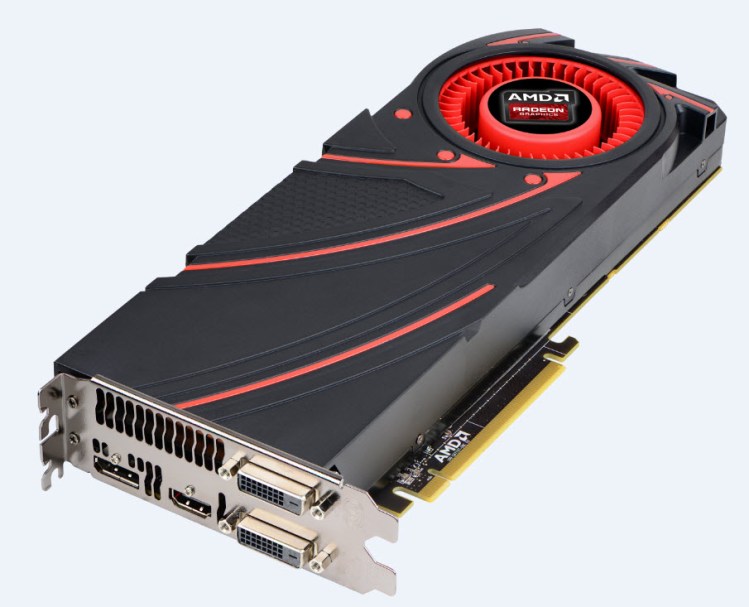Advanced Micro Devices is launching graphics cards today that use its new R7 and R9 series Radeon graphics processing units (GPUs).
These new chips will cover the whole range of computing, from the low end to the high end of the entertainment and gaming PC markets. Normally, graphics chip makers introduce a high-end chip, followed by a series of dumbed-down chips. But AMD is taking the unusual step of introducing graphics across the board, and that should make consumers happy.
“We took the bold step of introducing an entire family, all at once, to the public,” said Evan Groenke, the graphics product manager at AMD, in an interview with GamesBeat. “We’re delivering much better performance, and that translates to better value for gamers.”
The Sunnyvale, Calif.-based company is positioning itself against rivals Nvidia and Intel for the fall season. The new chips have doubled the performance of AMD chips in the past couple of years.
They include the AMD Radeon R7 240, the R7 250, and the R7 260X at the low end. These chips will be built into graphics cards aimed at “everyday gamers” looking to boost the graphics performance of their PCs. They are designed to enable faster web browsing and better video editing. The R7 260X graphics card has AMD TrueAudio technology, which enables audio processing on the graphics chip itself. That will deliver features like “true-to-life echoes.”
At the high end, AMD is launching the AMD Radeon R9 270X and R9 280X. The highest-end chips will support UltraHD (4K) resolution and AMD Eyefinity multimonitor technology. The R9 270X is targeted at 1080p high-definition resolution while the R9 280X is suited for 2560 by 1440 resolution for graphically demanding games like Battlefield 4.
Groenke said that the 280X 3GB card is almost twice as fast as its predecessor Radeon 6970 graphics chip. It is also 39 percent faster than the Nvidia GTX 760 with 2GB of main memory.
The chips all share a common heritage of the Graphics Core Next architecture, which is being used in upcoming game consoles the PlayStation 4 and the Xbox One.
They also have support for Mantle, a new AMD technology that matches and tries to outdo Microsoft’s DirectX graphics technology. Games enabled with Mantle will be able to speak the native language of the GCN architecture, enabling better performance and image quality.
“We have winning products at every price point, and AMD is proud to be able to deliver affordable hardware designed for performance to suit the needs of every gamer,” said Matt Skynner, the corporate vice president and general manager of the graphics business unit at AMD.
The R7 240 will be sold in cards that cost $69. The R7 250 will sell in $89 cards, and the R7 260X will sell in $139 cards. The R9 270X will be $199 for 2GB of video memory and $229 for 4GB. The R9 280X will be sold in cards that cost $299. All of the graphics cards will be available on Oct. 11. The chips are built in a 28-nanometer manufacturing process.
“Benchmarks on AMD’s new R9 280X-based cards indicate slight improvements over their predecessors in game performance, idle power at load, and noise levels” said Patrick Moorhead, analyst at Moor Insights & Strategy. “These improvements were driven by partner card mechanical implementations and driver improvements. On the whole, bragging rights on game benchmarks still go to Nvidia, albeit a small margin. The real test between AMD and Nvidia on raw gaming performance will come with AMD’s” upcoming products.
VentureBeat's mission is to be a digital town square for technical decision-makers to gain knowledge about transformative enterprise technology and transact. Learn More

